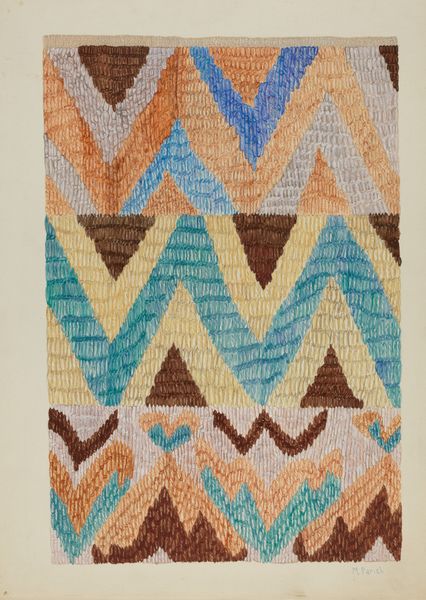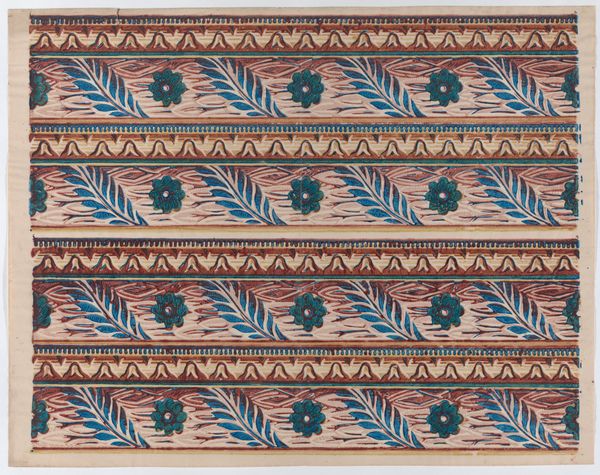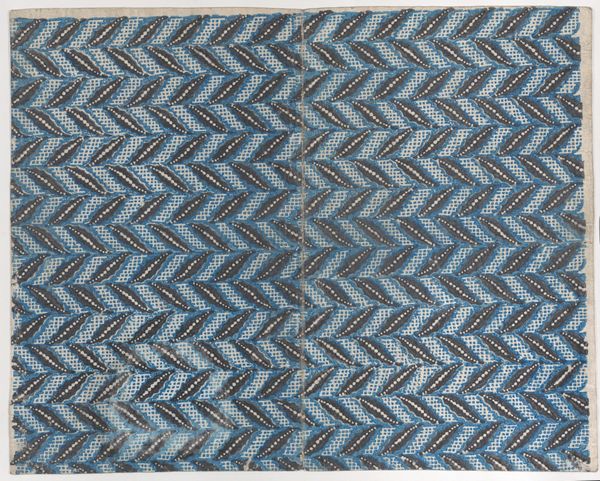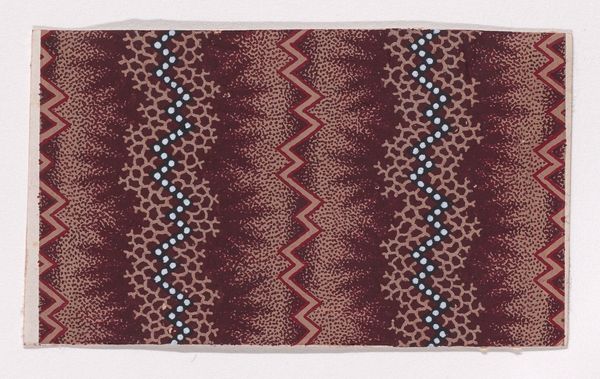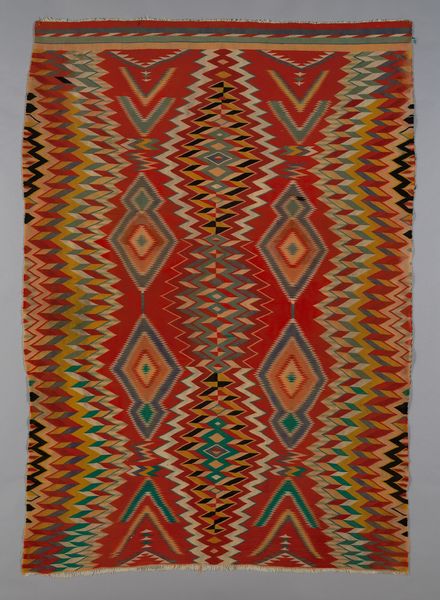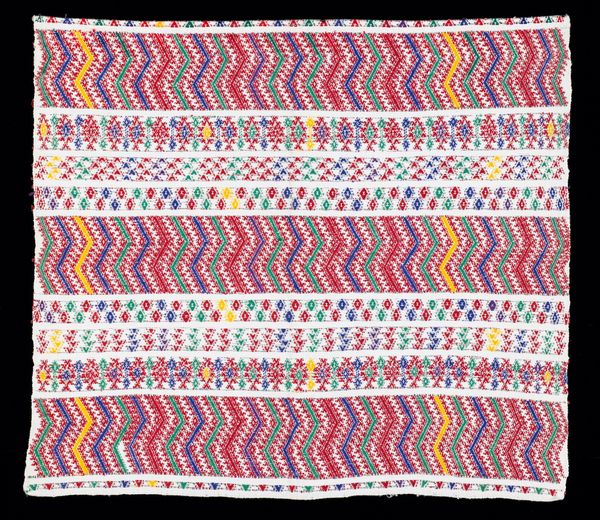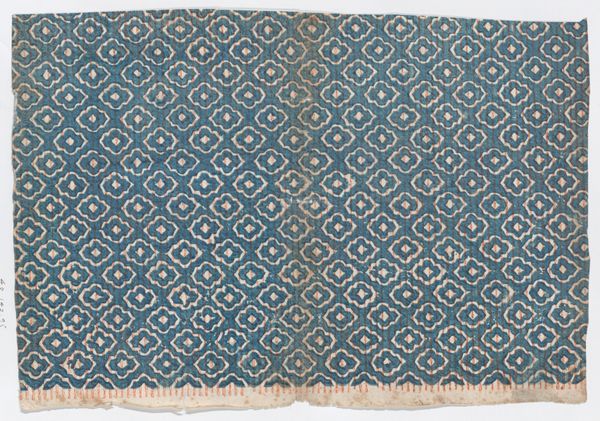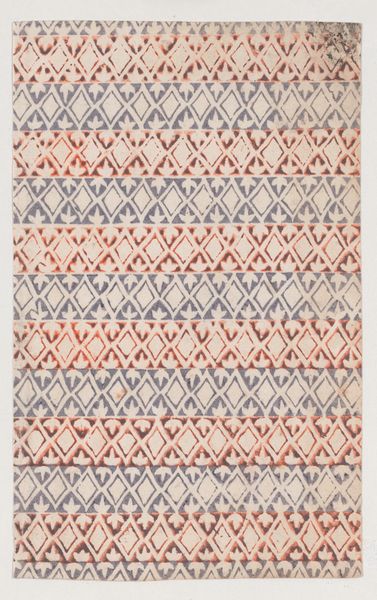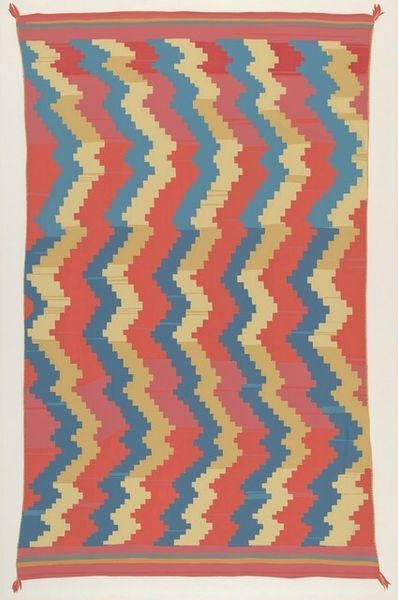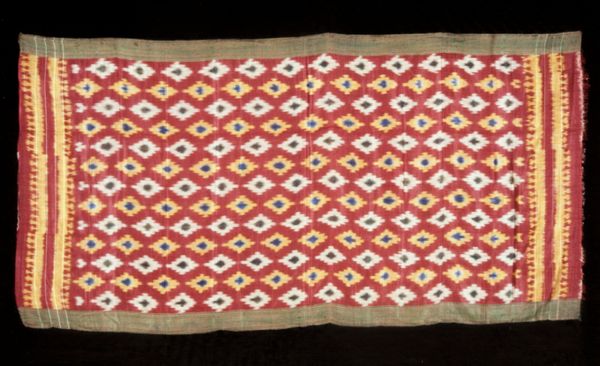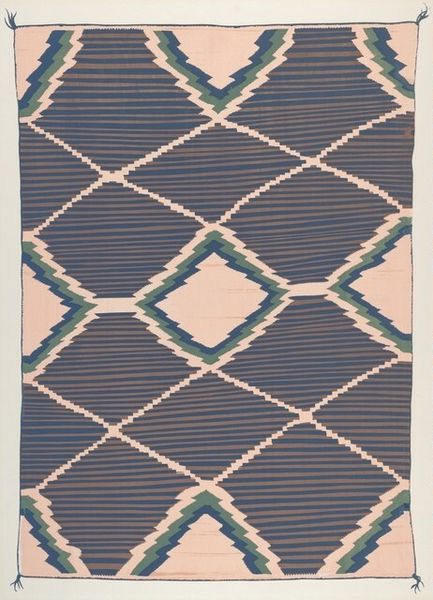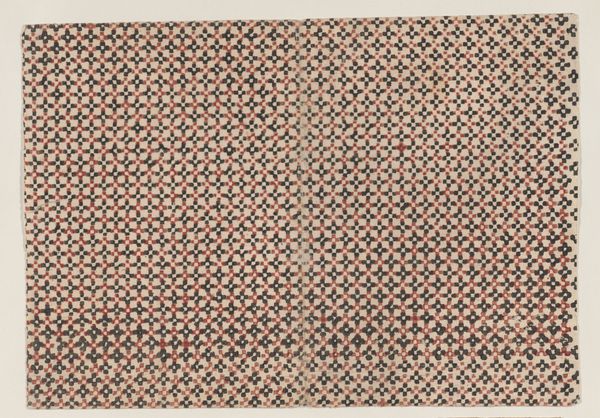
drawing
#
drawing
#
geometric pattern
#
geometric
#
geometric-abstraction
Dimensions: overall: 48.3 x 73.5 cm (19 x 28 15/16 in.)
Copyright: National Gallery of Art: CC0 1.0
Curator: Stepping into our collection, we encounter "Colcha," a drawing created around 1937 by Margery Parish. It presents us with this… intense geometric pattern. What leaps out at you first? Editor: An organized sort of chaos! It's a wild, vibrating thing, visually. I keep thinking of it as sound. I want to reach out and smooth it flat, to quiet it. There’s something about the colors, and the tightness of the lines. Curator: You mentioned organized chaos. Tell me, what kind of order do you observe amidst what appears as quite an overload of patterning? Editor: The horizontal lines! It’s row upon row of abstracted geometric figures stacked into something resembling fabric, or topography, almost a bird's eye view of mountain ranges… And the colors soften that starkness, lending a rustic kind of softness to those peaks and valleys. Curator: Precisely. Parish creates a textile impression using only lines, a playful tension of the hand-drawn combined with these very formal geometries. You get lost trying to discern the basic figures! Thinking of “colcha,” though, a traditional kind of embroidered quilt work from the Southwest… Suddenly the whole drawing snaps into focus. Editor: Right, that shift in perspective is key. Immediately, you start looking at this thing through the eyes of tradition, domestic labor, craft... Are we meant to consider how Parish plays with traditional forms of craft? How does she transform that? Curator: Perhaps Parish subverts the notion that these kinds of ‘womanly’ craft traditions cannot also function as an experimental abstract artwork? Think about the intensive labor involved in quilt making. Here, Parish’s dense drawing mimics that intensity. Each line carefully drawn. It makes me wonder if this piece is actually more about the act of obsessive creation itself? Editor: That kind of meditative state opens a whole new dimension for this colcha, which can prompt us to ask if women’s artistic traditions throughout the twentieth century were unfairly criticized simply as a result of a patriarchal desire to delegitimize non-masculine forms of artwork. Curator: Which perhaps draws us back to my initial feeling about its "organized chaos". Even the artist seems on the edge of overwhelming the established systems in her artistic pursuit! Thank you, those ideas definitely stitched together something special for me, adding a deeper and more layered appreciation of this textile drawing. Editor: Absolutely, let's never underestimate the potential for geometry to hold stories!
Comments
No comments
Be the first to comment and join the conversation on the ultimate creative platform.
